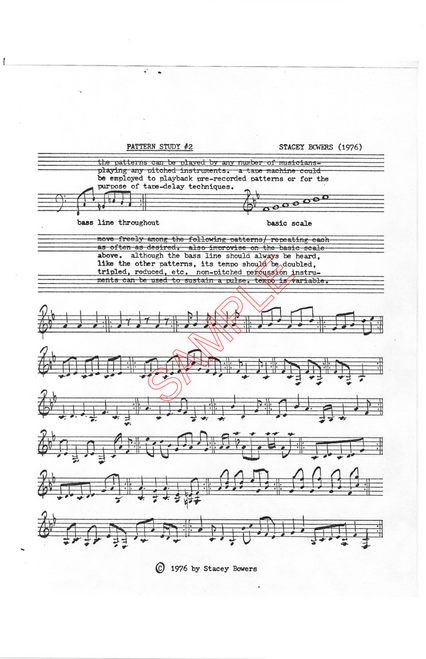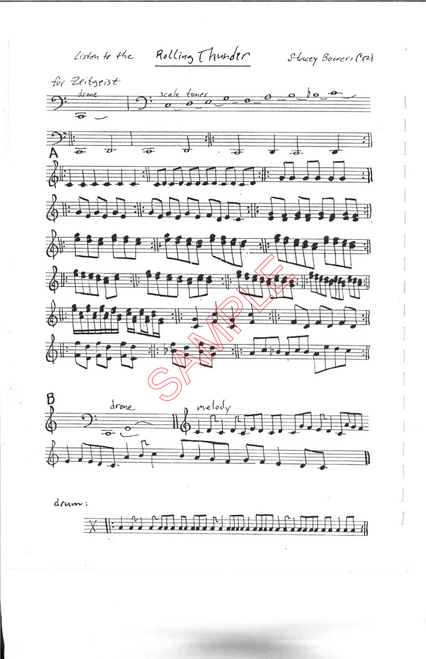Includes score.
This piece was written in 1976. Twenty-four patterns are repeated and improvised over a seven-note bass line that is repeated throughout. The work can be played by any pitched instruments and often incorporates drums or other rhythm instruments to sustain a pulse. Pattern Study #2 has been performed numerous times over the years by both professional and student ensembles. The Blackearth Percussion Group performed it often. Zeitgeist recorded it in 1980 and re-released it digitally in 2015. It was beautifully performed with diverse instruments by Eighth Blackbird.
Additional scores can be ordered here for 5.00 each.
Want it now? Click here to purchase a digital copy of this product.
Review from Percussive Arts Society:
Pattern Study No. 2
Stacey Bowers
During the second half of the twentieth century, many composers wanted to create music that had written materials, yet incorporated improvisation for each performance. This publication is scored for any number of musicians performing on pitched instruments.
“Pattern Study No. 2” utilizes 20 different motives that can be repeated an unspecified number of times, in addition to an F Mixolydian scale on which performers can improvise. A seven-note bass pattern exists, which at least one performer should play continuously throughout the work. The composer indicates that the bassline can be altered, either by doubling, tripling, or slowing the tempo. The other voices are written with repeated measures, with each having a varied number of notes and rhythm patterns. These motives will create unique freshness with the changes playing over the seven-note bass pattern. Additionally, the composer indicates non-pitched percussion instruments can be included to help sustain a pulse, as well as the inclusion of pre-recorded patterns from the score on tape or CD.
Despite the freedom allowed to the performers, the rhythmic material will require advanced players to be successful. The work was written in 1976, but will be fresh and new with each performance.—George Frock, 2020
Demo:







